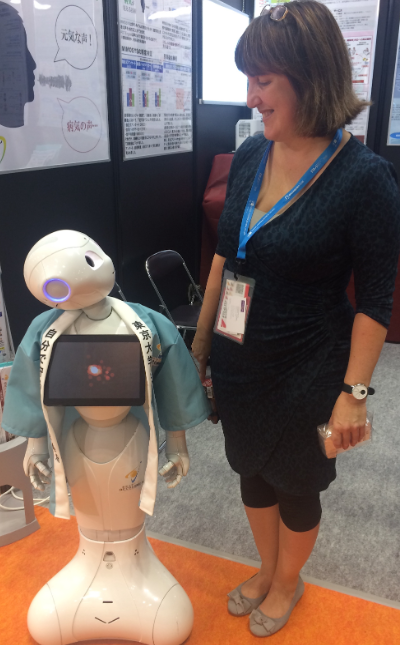Part 1: Tokyo
Old friends and new ideas
Enduring relationships are always invaluable, and after several years of being embedded in Greater Manchester City region’s innovation hub, it was a privilege to be able to reconnect with our long-time colleagues from Hitachi’s healthcare and research teams. We had a great morning’s meeting sharing recent insights, new avenues of opportunity and talking all things learning health systems. There was an exciting potential convergence with Hitachi’s current work on stroke pathways and follow up work is planned to draw on mutual expertise and explore new ways of working together.
Over a working lunch, Gary met with some colleagues who also worked with Hitachi in Salford, and are now developing innovative new technologies at Eagle Matrix. One exciting new project already in testing is in the use of virtual reality headsets and machine learning to identify blind spots in people’s vision. Gary also got to try out their new heart rate monitor, which is combined with an accelerometer to also monitor sleep quality and alert for sleep apnea. Amazingly, this was designed and developed using the 3d printer and electronics workshop inside their offices, and is now a class 1 certified medical device: agile, can-do innovation in action.









